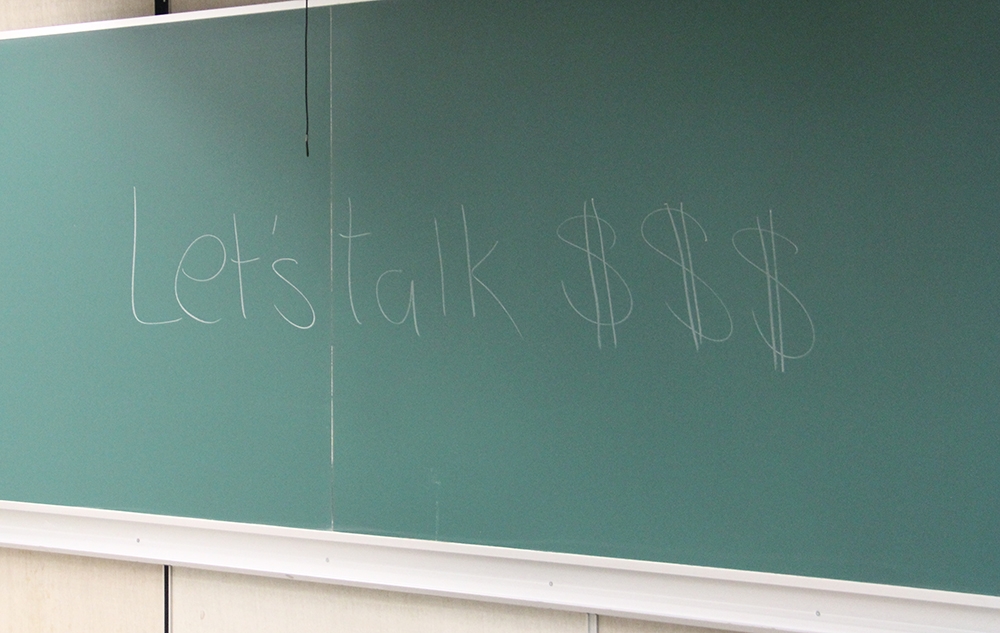Shakil Mirza | Contributor
Featured image: Post-secondary students may know the periodic table of elements, but lack the life skills of budgeting and saving. | Amir Yazdanparast
Reports as early as 2014 suggest post-secondary enrollment is going down, with a multitude of factors contributing to the slipping numbers. One of the biggest concerns for would-be and current students is the increasing price of tuition. General education courses begin at $731.19 per three-credit course. With students knowing very little about finances before plunging into what might become the greatest investment of their lives, the question becomes whether students should be taught better financial literacy at an earlier age. Or is there not enough room in the curriculum?
A common argument against teaching financial literacy in schools is that fundamental skills, like budgeting and finance, should be taught in the home. To that logic, healthy eating is just as fundamental, yet students study Canada’s Food Guide in elementary schools. Despite the emphasis on health and wellness, Canadians barely crack the top 10 healthiest nations worldwide.
Perhaps this problem is one that not only post-secondary students face. CEO of Credit Canada Debt Solutions Laurie Campbell once said: “Canadians don’t understand the basics.” A survey conducted by Capital One saw that 53 per cent of Canadians felt uncomfortable discussing money. This fear has made the subject matter a taboo right from home. Our schools are not yet comprehensively designed to facilitate retention of these principles. There is room for improvement, as financial literacy is still an evolving field of study in theory and practice.
For the 40 per cent of Canada’s adult population that are financially illiterate, the effects go beyond everyday financial habits. For example, in conjunction with the Canadian Centre for Financial Literacy, Jennifer Robson of Carleton University released a study in 2012 that highlighted that financial stress is higher in individuals who lack financial knowledge and resources. A financial literacy intervention among vulnerable groups improved saving behaviours and the consistency of deposits. The intervention also improved psycho-social outcomes in participants, such as reducing stress and enhancing self-efficacy.
To make schools a better place for financial learning, teachers should be certified for financial discipline and circumstances. In an integrated approach currently in place in some Oklahoma districts, schools use the expertise of financial planners in multiple classes to create a cumulative program.
The Canadian Financial Capability Survey is conducted every five years to evaluate the efficacy of financial literacy tools, and to better determine the financial well-being of Canadians. Currently, the Financial Consumer Agency of Canada is working toward teaching Canadians to manage money and debt wisely, plan and save for the future and prevent and protect against fraud and financial abuse.
With students opening up bank accounts before they can even vote, many are averse to meeting professionals. Only a reported 59 per cent of millennials have started saving for retirement.
But where does this leave post-secondary students with little background knowledge on finances? Finances and money won’t fix themselves unless you put the right foot forward. Educate yourself about different avenues that you can take in making investments and saving money. Understand that you may not have all the knowledge, and make an appointment with a financial advisor at your bank. Given the chance to avoid a major financial mistake—at the price of undergoing some awkward small talk with a financial advisor—it’s always better to be safe than sorry.


